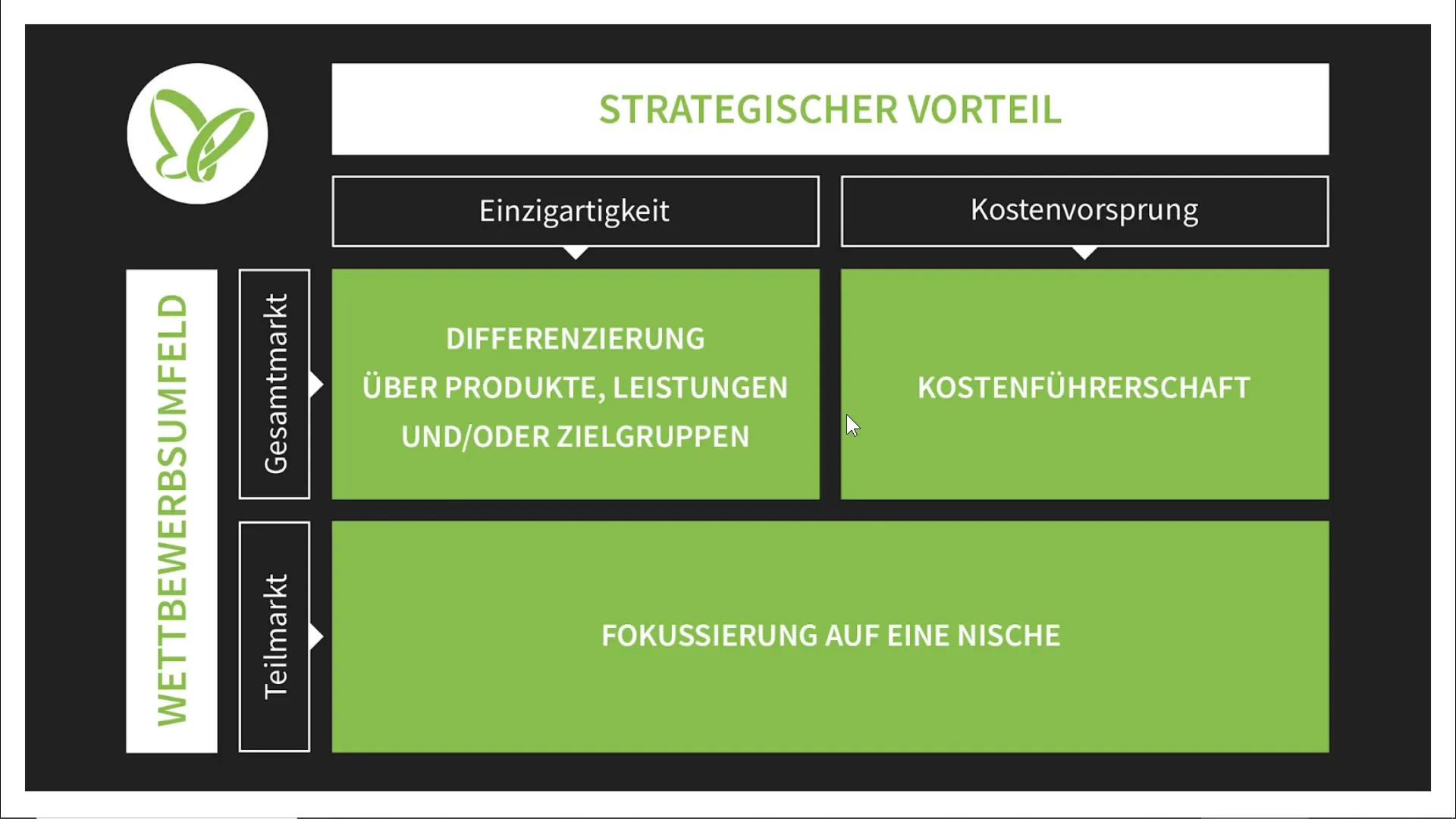The positioning of a company is a decisive factor for its success. It lays the foundation for the brand identity and influences how customers perceive the company. In the following sections, you will learn about the basic approaches to positioning that can differentiate you in both the submarket and the overall market. The selection of a unique strategy plays a central role.
Key Insights Positioning can focus on three main aspects: Uniqueness, Cost Leadership, and Niche Focus. Additionally, a distinction is made between overall market and submarket, while the term "market segment" targets specific customer groups.
Step-by-Step Guide
Basics of Positioning
The correct positioning means that you are either aiming for a strategic advantage through uniqueness or cost leadership. It is important to be aware that these strategies can apply to both the overall market and niche markets.

Uniqueness as a Strategic Advantage
A strategic advantage through uniqueness means that you stand out as a leader in quality. You must ensure that your product or service offers a unique customer benefit or holds a unique status. An example of this could be a luxury brand that sells exclusive products that clearly differentiate themselves from the offerings of competitors.
Cost Leadership
Cost leadership typically means optimizing and automating processes in your company. The goal is to achieve value creation at a cheaper price than the competition. If successful, you can offer your products or services at lower prices and thereby gain a significant competitive advantage.
Niche Focus
Focusing on a niche in the submarket is another positioning strategy. Here, you concentrate on a specific product group or type of service. An example of this could be the market for dog food, while the overall market includes "pets." This specific focus allows you to better serve the needs of a specific target group.
The Difference between Overall Market, Submarket, and Market Segment
It is important to differentiate between the terms overall market, submarket, and market segment. The overall market refers to a broad category of products or services, while the submarket targets specific groups within this market. A market segment, on the other hand, defines customer groups with homogeneous needs that you can address specifically.
Differentiation and Target Groups
Differentiation is the key concept to operate successfully in a competitive market. It can be achieved through specific products, services, or by addressing certain target groups. The choice of target group is crucial to serve the right market segments and effectively implement the positioning.
Summary
In this guide, you have learned the essential elements of positioning. You now know that uniqueness, cost leadership, and niche focus are important strategies aimed at clearly defining yourself in both the overall market and the submarket.
Frequently Asked Questions
What is a strategic advantage in positioning?A strategic advantage refers to the uniqueness, cost leadership, or niche focus of your company.
How does the overall market differ from the submarket?The overall market encompasses a broad product category, while the submarket targets specific segments within this category.
What does market segment mean in the context of positioning?Market segment refers to a group of customers with homogeneous needs within a larger market.
Why is differentiation important for positioning?Differentiation helps to stand out from the competition and better satisfy specific needs of a target group.
How can I achieve cost leadership?By automating and optimizing internal processes, you can reduce costs and offer competitive prices.


